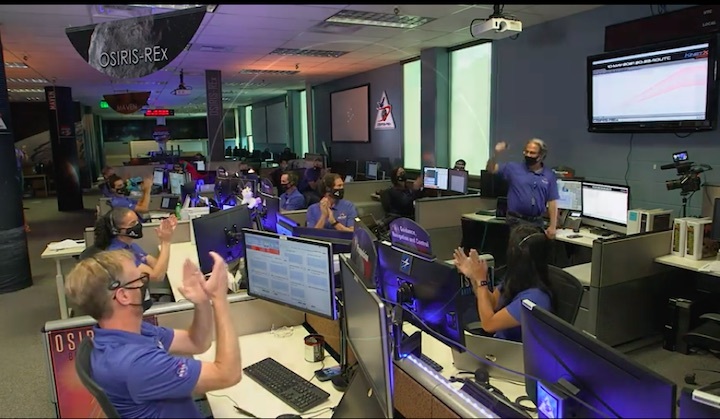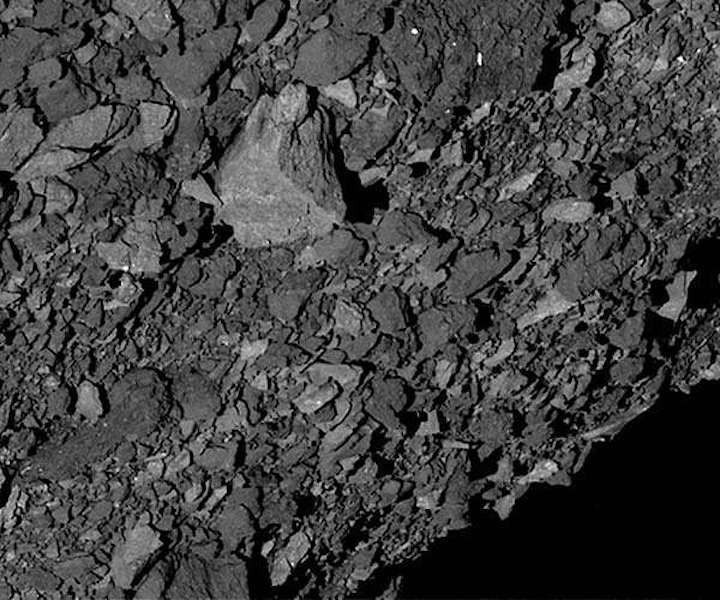13.05.2021
NASA'S OSIRIS-REX LEAVES ASTEROID BENNU, HEADS FOR HOME
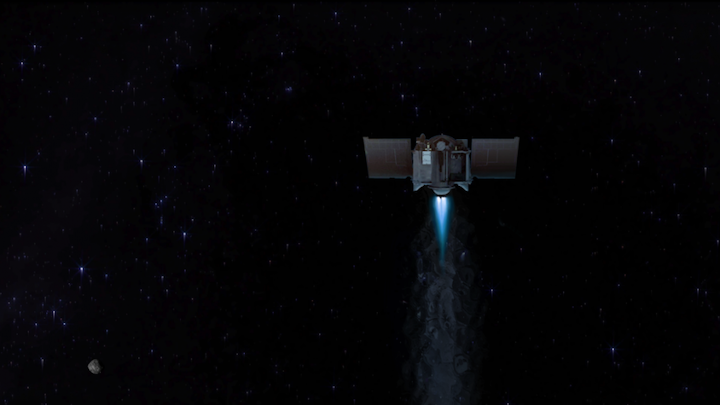
NASA’s asteroid explorer has begun its long journey home with precious cargo onboard: samples of the asteroid Bennu.
It has been worth the wait. After five years on mission, including more than two years spent exploring the 500-meter asteroid 101955 Bennu, NASA’s Origins, Spectral Interpretation, Resource Identification, Security, Regolith Explorer (OSIRIS-REX) burned its thrusters for seven minutes on Monday, May 10th. This burn set the spacecraft moving 1,000 kilometers per hour (600 mph) relative to the asteroid to start its 2.5-year journey home to Earth.
“Our whole mindset has been, ‘where are we in space relative to Bennu?’” says Mike Moreau (NASA-Goddard Spaceflight Center) in a recent press release. “Now our mindset has shifted to ‘where is the spacecraft in relation to Earth?’”
THE LONG ROAD HOME
Now, the spacecraft will orbit the Sun twice interior to the orbit of Venus, before making a flyby of the Earth on September 24, 2023. Then, the sample return capsule will separate from the spacecraft, for a parachute reentry over the Utah Test and Training Range in the Utah desert. This isn’t without risk: in 2004, the Genesis sample return capsule slammed into the Utah desert floor when its drogue chute failed to open.

NASA / Goddard / University of Arizona.
OSIRIS-REX arrived at Bennu in December 2018 and spent several months mapping the asteroid from afar before approaching it up close. The mission's climax occurred on October 20, 2020, when the spacecraft approached the Nightingale site, touched the surface of the asteroid for six seconds, and fired a burst of nitrogen gas through its Touch and Go, Sample Acquisition Mechanism (TAGSAM) arm to collect bits of rock from the surface.
The sampling maneuver proved to be more than successful, as the SamCam imager revealed the TAGSAM head was overflowing with material, slowly escaping though an open flap. Engineers made the quick decision to immediately stow the sample before losing any further material, forgoing the optional spin test to “weigh” the collected debris.
Even without the spin test, NASA is confident based on visual inspection that the maneuver collected between 400 grams and 1 kilogram of regolith — well over the mission goal of 60 grams. The samples collected by OSIRIS-REX represent pristine remnants of the early solar system — not to mention NASA's biggest sample return since the Apollo era.
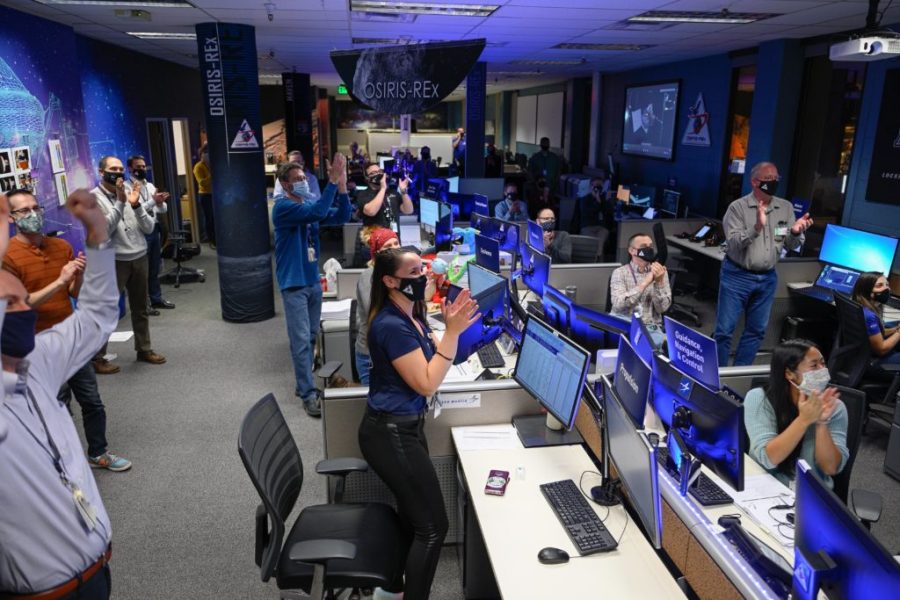
Lockheed Martin
The asteroid held its share of surprises and challenges for the mission team. Bennu's surface turned out to be rougher than expected, strewn with large boulders that made sample site selection challenging. Despite the potential hazards, sample collection was successful. A last pass 3.5 kilometers over the Nightingale site, completed before the team switched off navigation cameras on April 9th, showed the impression the spacecraft made upon landing.

NASA / GSFC / University of Arizona
Now, engineers will periodically check in on the spacecraft, making course corrections as needed. If everything goes as planned, OSIRIS-REX should have lots of fuel remaining post-Earth flyby. In fact, it’s not out of the question that the spacecraft might head toward a secondary target. Both Japan’s Hayabusa 2 and China’s Chang’e 5 lunar sample collector, which completed their primary missions in 2020, are now headed toward new targets.
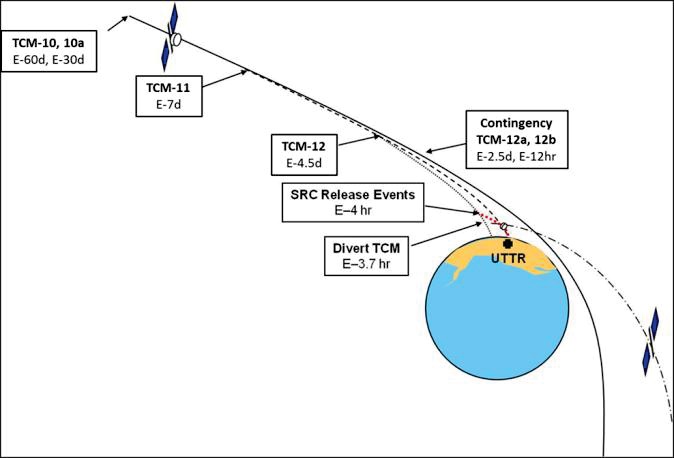
NASA / Lockheed Martin
It has been a long journey already, and miles left to cover, but it will be exciting to see the sample return capsule streaking across the Utah sky come late 2023.
Quelle: Sky&Telescope
+++
OSIRIS-REx Bids Farewell to Asteroid Bennu

On April 9, 2021, NASA's Origins, Spectral Interpretation, Resource Identification, Security, Regolith Explorer (OSIRIS-REx) spacecraft took one last look at Bennu, the asteroid from which it scooped up a sample last October. Slated for return to Earth in 2023, the mission is on track to deliver a sample of pristine material left over from the formation of our solar system into the hands of researchers on Earth.
This image, the last one taken by the spacecraft, shows crescent Bennu with its night side merging with the complete black of space as the spacecraft pushed away from Bennu.
For two years, OSIRIS-REx studied the asteroid, revealing the many secrets of this ancient body and delivering clues about its rubble-pile-like consistency and surface terrain, which turned out to be much rockier and more rugged than initially expected from the observations of ground-based telescope.
On May 10, 2021, the spacecraft embarked on its return voyage to Earth. On Sept. 24, 2023, the spacecraft will jettison the sealed capsule containing the sample and send it onto a trajectory to touch down in the Utah desert.
Quelle: NASA
----
Update: 4.06.2021
.

